Virtual Box Startup nsh or Any Other Key to Continue Shell Mac
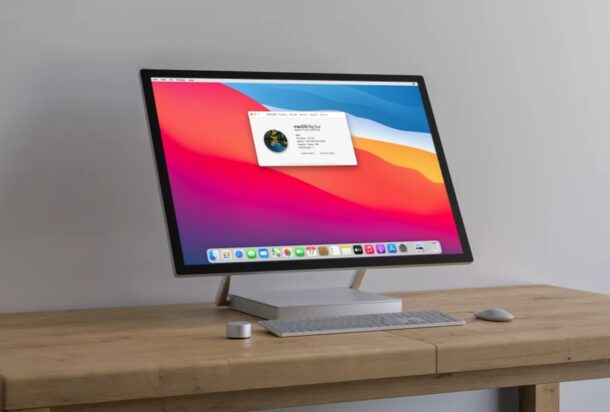
Are you interested in running macOS Big Sur or Monterey from a Windows PC? If you don't want to spend money on a Mac, you can use a virtual machine and still try out macOS, thanks to VirtualBox.
Before you start making assumptions, this is not a super-complicated Hackintosh setup. Instead, you will be running VirtualBox natively on your Windows computer and installing macOS as a guest operating system within VirtualBox. Unlike a Hackintosh, you don't need any special hardware to get macOS up and running on your computer. With VirtualBox, you can install multiple operating systems on a single computer and seamlessly switch between them as you desire. The operating systems basically run within an application, which virtualizes the hardware, and the OS itself doesn't know the difference.
If you're interested in running macOS Big Sur or macOS Monterey in Windows using VirtualBox, then read along.
Requirements for Running macOS in VirtualBox
This is going to be a pretty long procedure, but we'll make it as simple as possible. However, before you get started, you'll need to download VirtualBox and some additional essential files. The following links should be helpful to download the files necessary to get macOS Big Sur up and running on your VirtualBox virtual machine without any issues. However, you'll need to obtain the ISO file for the latest version of macOS Big Sur by yourself. You can also use a different macOS version, provided you have an ISO of that release too.
- Download VirtualBox for Windows
- Download VirtualBox Extension Pack
- VirtualBox Code
- macOS Screen Resolution Code for VirtualBox
Performance will depend on how fast the computer is that is running VirtualBox, so obviously the better the PC the better that macOS will run virtualized on it.
How to Install macOS Big Sur Using VirtualBox on Windows
Now that you have all the necessary files downloaded to your computer, you're ready to go ahead with the procedure. This tutorial is detailed for educational purposes only.
- Install the VirtualBox software on your computer. After that, click on the VirtualBox Extension Pack file that you downloaded.
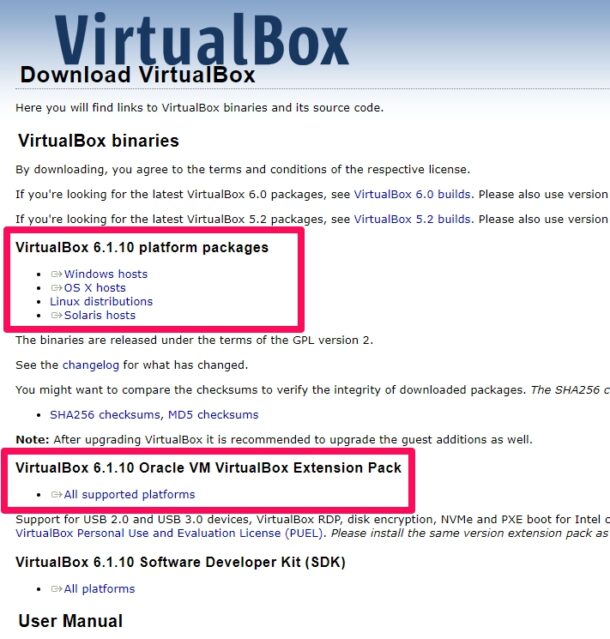
- Clicking on the extension pack will open VirtualBox on Windows with a pop-up prompting you about the installation. Click on "Install" to finish this step.
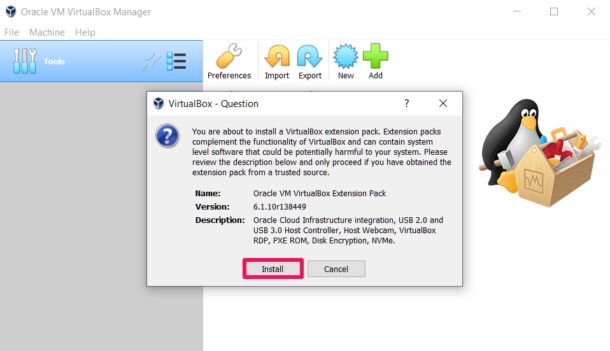
- You've successfully installed the extension pack. Now, you're ready to create your virtual machine. Click on "New" in the VirtualBox software.

- Here, give a valid name for your virtual machine. For example, "macOS Big Sur" as shown below. Make sure the type is set to Mac OS X and the 64-bit version is selected. Once you're done, click on "Expert mode" to proceed to the next step.
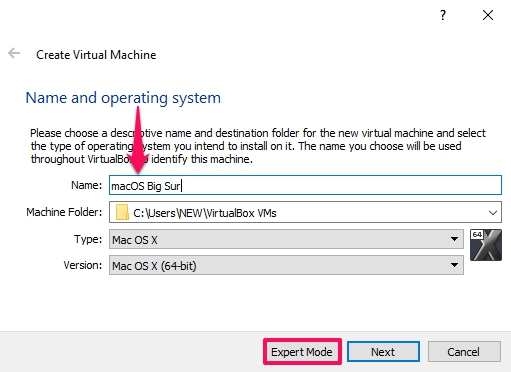
- In this step, you'll be selecting the memory size or RAM that will be allocated for your virtual machine. It's recommended to set half of your total system RAM for the guest OS. Make sure, "Create a virtual hard disk now" is selected and then click on "Create".
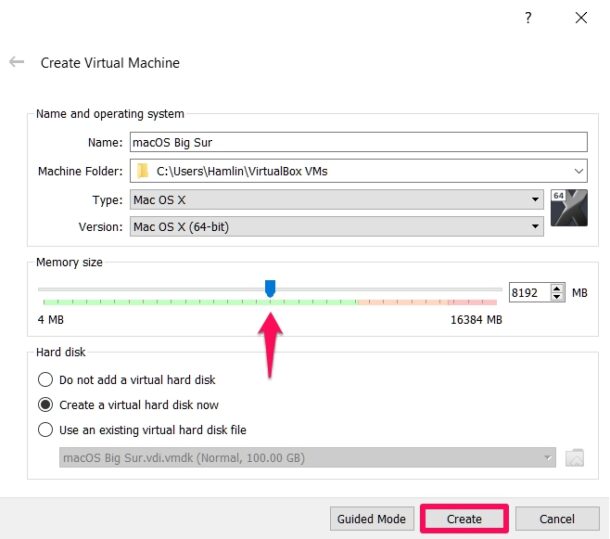
- Now, use the slider to set the virtual hard disk size according to your preference. Although this depends on how much free storage space you have on your computer, we recommend you to allocate 100 GB for the virtual machine. Select "VMDK (Virtual Machine Disk)" for the hard disk file type and click on "Create".

- Now, click on "Settings" in VirtualBox as shown in the screenshot below.
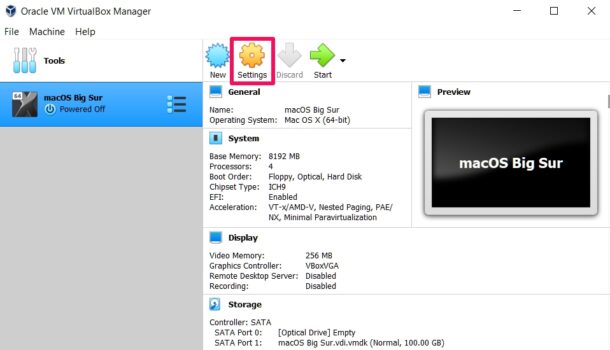
- Head over to the "System" category and click on "Processor" from the top menu. You'll be able to use the slider to adjust processor allocation. It's recommended to allocate half of your processor's core count for the virtual machine. Keep in mind that if you have a 4 core/8 thread processor, it will show up in VirtualBox as 8 CPU cores. In that case, you can set 4 cores for processor allocation.
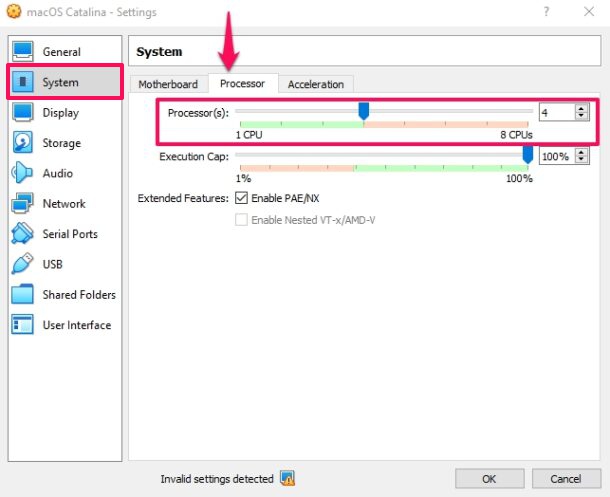
- Next, click on "Display" from the left pane and move the slider all the way to the right for "Video Memory".
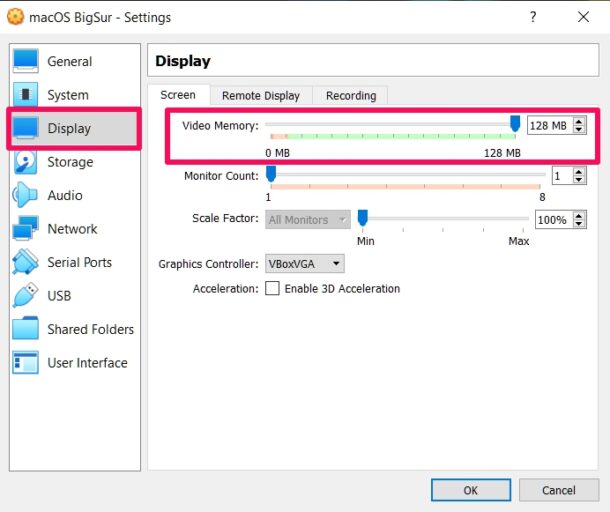
- Now, go to the "Storage" category and click on "Empty" under Storage Devices. Then, click on the optical disk icon on the right and choose "Create a Virtual Optical Disk" from the dropdown menu.
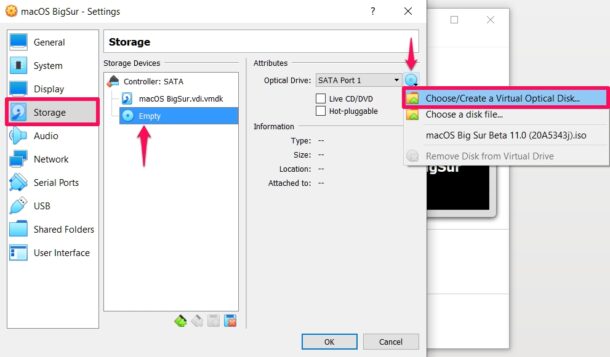
- You can click on "Add" to browse for the macOS Big Sur ISO file that you download using File Explorer. Select the ISO file and click on "Choose".
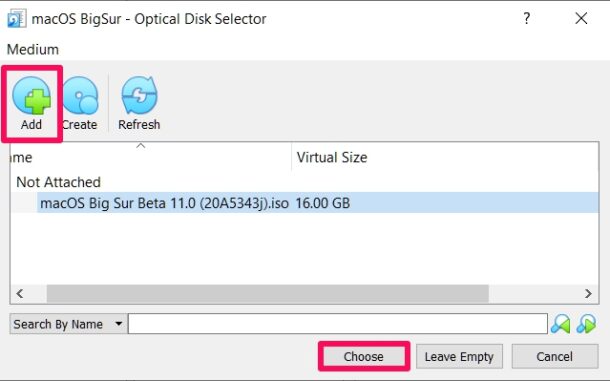
- Now, click on "OK" to exit VirtualBox settings and close the VirtualBox application as well.
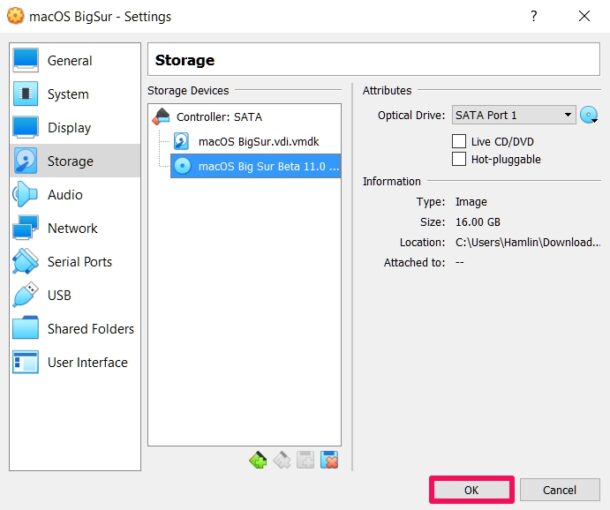
- Open "Command Prompt" on your PC. Be sure to run Command Prompt as an administrator.
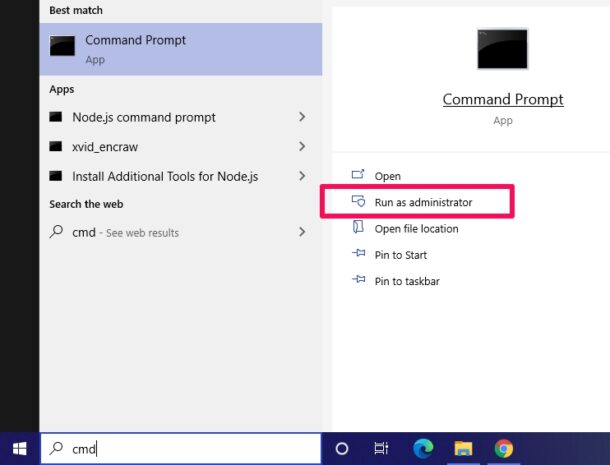
- Now, open the VBox Code text file in Notepad. Copy/Paste the first command line in Command Prompt and hit "Enter".

- Next, you'll need to paste the remaining lines, but before that, you will need to replace "Your Virtual Machine Name" with the name you used while setting up your machine in VirtualBox. For example, it's "macOS Big Sur" in this instance. After replacing it, copy/paste all the remaining lines in Command Prompt and hit "Enter".

- Now, open VirtualBox again and click on "Start". Wait a couple of minutes for VirtualBox to perform the operation. You should be able to see the macOS installation progress in VirtualBox now. This is going to take several minutes to complete, but once it's done, you can follow the on-screen instructions to set up your Mac, which is similar to setting up any new Apple device.
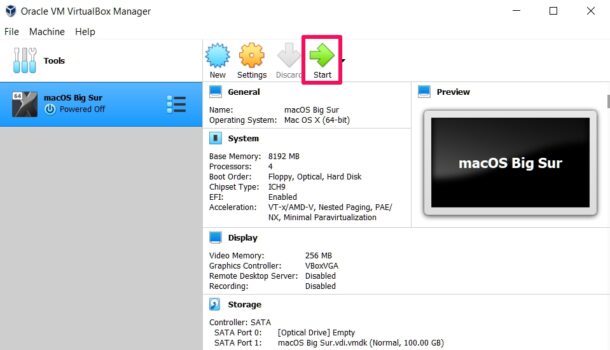
- Although you got macOS up and running on your computer, we're not quite finished yet. The default resolution of macOS or any guest OS that you install on VirtualBox is 1024×768, which is probably not what you want. However, this can be changed using the macOS screen resolution code. Close VirtualBox, run Command Prompt as an administrator, and copy/paste the first line from the screen resolution code file. Click "Enter".
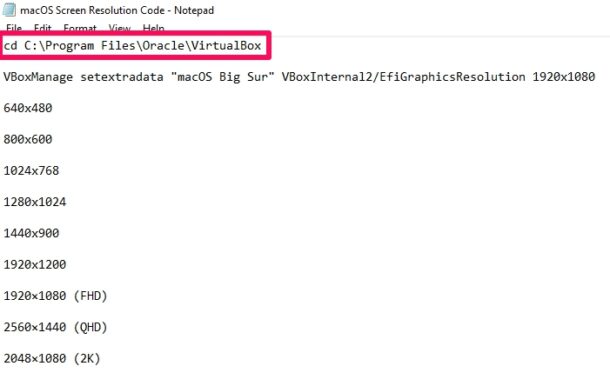
- Now, make sure you use your VM name and replace the resolution value in the second line of code according to your monitor resolution or personal preference. Then, copy/paste this line in Command Prompt. Hit "Enter" and exit CMD.
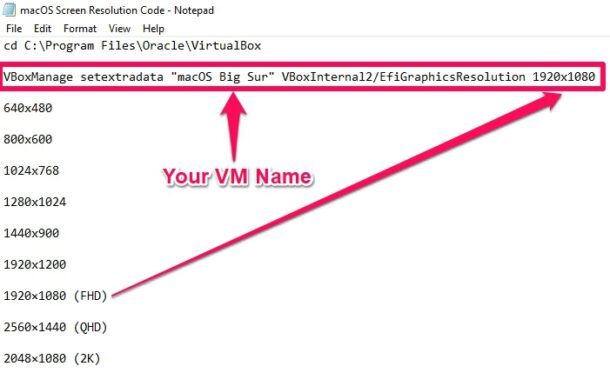
The next time you start your virtual machine, VirtualBox will load up macOS, and at a higher screen resolution.
Here's a reality check. Don't expect your macOS virtual machine to operate anywhere nearly as fast as an actual Mac, or Windows natively running on a computer. A sluggish experience is to be expected. The performance of the virtual machine will also be heavily dependent on your system hardware.
That being said, installing macOS on a Windows computer virtually is so much easier with software like VirtualBox and could come a long way in helping you decide if you want to switch to a Mac. You can connect your iOS devices to your Virtual Mac just like a real Mac, try out various software, apps, and a lot more.
This procedure primarily focuses on macOS Big Sur, but it works the same with other recent releases of macOS too, provided you have the ISO file for that particular version. If you want to update the macOS installed in your virtual machine to the latest software, you can update the system software just like you normally would on an actual Mac.
Likewise, VirtualBox can also be used to virtually install and run Windows on a Mac. The process is fairly similar if you have the required files, mainly the Windows ISO and VirtualBox.
Did you get macOS running in VirtualBox on Windows? What are your thoughts on this process and how it all works? Let us know your experiences and thoughts in the comments.
Source: https://osxdaily.com/2021/07/15/how-install-macos-virtualbox-windows/
0 Response to "Virtual Box Startup nsh or Any Other Key to Continue Shell Mac"
Post a Comment